SEMIOPUNK (35)
By:
July 3, 2025
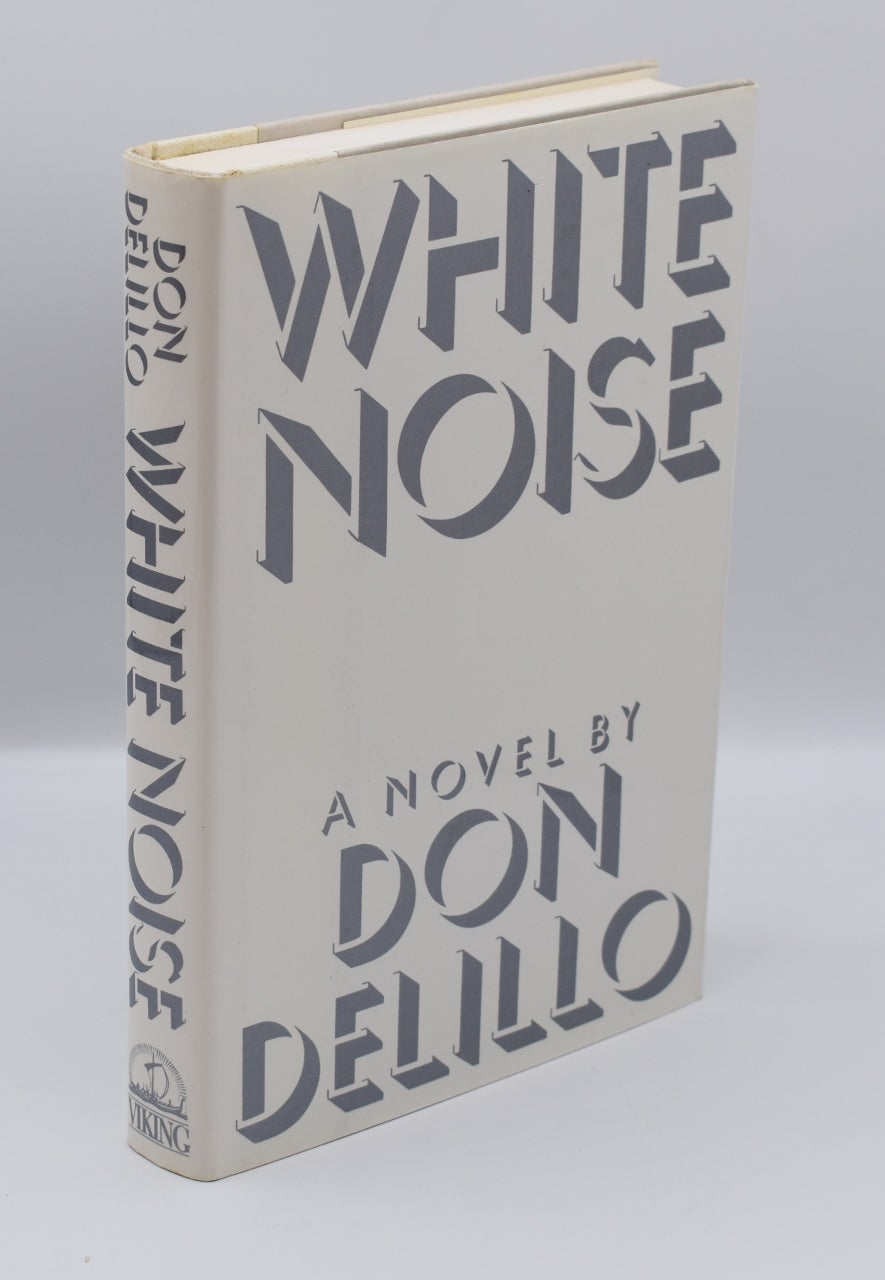
An irregular, ongoing series of posts dedicated to surfacing examples (and predecessors) of the sf subgenre that HILOBROW was the first to name “semiopunk.”
BABEL (2022) | BABEL-17 (1966) | CAMP CONCENTRATION (1968) | A CANTICLE FOR LEIBOWITZ (1959) | CAT’S CRADLE (1963) | COSMONAUT KEEP (2000) | THE DIFFERENT GIRL (2013) | DOOM PATROL (1987–91) | THE EINSTEIN INTERSECTION (1967) | EMBASSYTOWN (2011) | ENGINE SUMMER (1979) | EXPLOITS AND OPINIONS OF DR. FAUSTROLL, PATAPHYSICIAN (1911) | FEERSUM ENDJINN (1994) | FLATLAND (1884) | FRIDAY (1982) | LE GARAGE HERMÉTIQUE (1976–79) | THE GLASS BEAD GAME (1943) | GLASSHOUSE (2006) | GRAVITY’S RAINBOW (1973) | THE HAMPDENSHIRE WONDER (1911) | LORD OF LIGHT (1967) | THE MAN WITH SIX SENSES (1927) | THE MOUNTAIN IN THE SEA (2022) | NINEFOX GAMBIT (2016) | ODD JOHN (1935) | PATTERN RECOGNITION (2003) | THE PLAYER OF GAMES (1988) | RIDDLEY WALKER (1980) | RODERICK (1980–83) | SNOW CRASH (1992) | THE SOFT MACHINE (1961) | SOLARIS (1961) | THE SPACE MERCHANTS (1953) | THE THREE STIGMATA OF PALMER ELDRITCH (1964) | TIME OUT OF JOINT (1959) | UBIK (1969) | VALIS (1981) | A VOYAGE TO ARCTURUS (1920) | VURT (1993) | WHITE NOISE (1985).
WHITE NOISE
Five months after the publication of William Gibson’s Neuromancer, which more or less single-handedly inaugurated science fiction’s “cyberpunk” era (c. 1984–93), Don DeLillo published White Noise, a “literary” novel that explores similar themes, from rampant consumerism and media saturation to conspiracy theories and human-made catastrophes. There must have been — sorry for the dad joke — something in the air.
Jack Gladney, a pioneering scholar in the field of Hitler Studies, teaches at College-on-the-Hill in Blacksmith, a bucolic college town in the suburbs of Iron City, a Rust Belt urban center. He and his wife, Babette, whose down-to-earth nature balances Jack’s neurotic anxiety and imposter syndrome, are parenting children — Heinrich, Steffie, Denise, Wilder — from previous marriages. Half-siblings and ex-spouses drift in and out of the story, which is at least as much a postmodern comedy (Jack’s previous wives, for example, are Pynchon-esque: one is a part-time CIA op, the other an ex-financial whiz who now manages a Montana ashram) or campus novel as it is a crucial early example of the “slipstream” meta-genre, i.e., literary fiction with sf and/or fantasy elements.
Already wrestling with unresolvable questions around what we might call (per Jessica Mitford) the American way of death, technology, and consumerism, Jack will find these abstract obsessions instantiated over the course of the academic year. He’ll discover that Babette, too, is a neurotic mess… and that she’s involved herself in an experimental study of the psychopharmaceutical Dylar (one of sf’s many absurdist pharmaceutical concoctions, from Soma and Melange to Ladder and Pax; one also thinks of the drugs Dancer and Wiz, from Neuromancer), which treats death-anxiety. He’ll ruminate over humankind’s drive to find purpose and meaning in a life that inevitably must end, and how this drive is subverted and pseudo-resolved by technology, media, and retail therapy.
And one day, Jack will find Heinrich on the roof of the house, watching a billowing cloud of smoke rise into the sky. A train car has derailed and caught on fire, releasing a poisonous toxic substance into the air. As the town of Blacksmith evacuates, Jack is exposed to Nyodene D., a lethal chemical that makes his fear of death all too concrete.
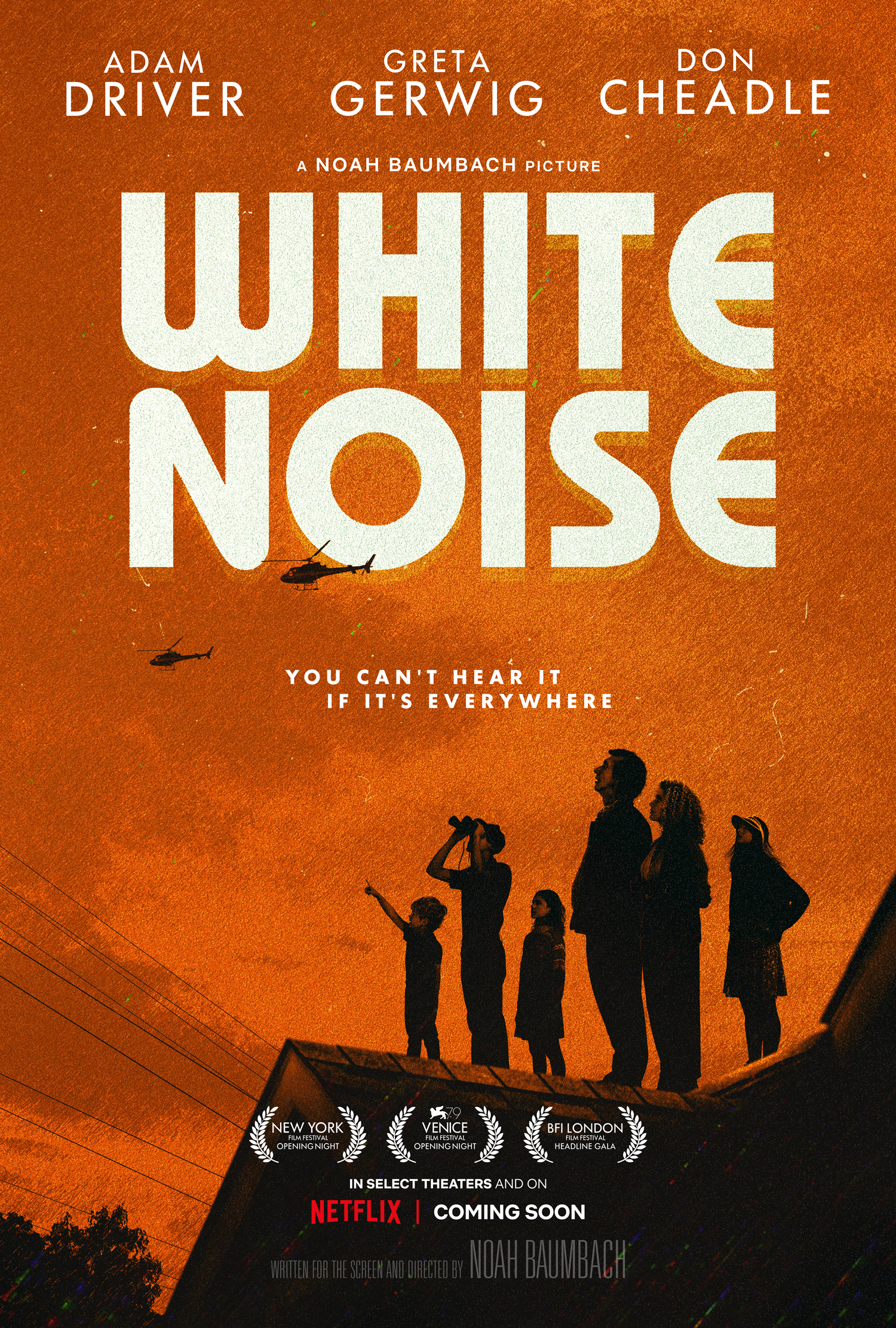
I first read White Noise as a college freshman or sophomore, and at the time I couldn’t really relate to Jack’s middle-aged musings. What delighted and inspired me were the conversations Jack had with Murray Jay Siskind, one of a cohort of [Jewish-coded] “smart, thuggish, movie-mad, trivia-crazed” New York émigrés who constitute College-on-the-Hill’s popular culture (“American environments”) department. We didn’t have a department of this sort at my school, nor — as far as I know — an Adorno-esque figure like Murray, who finds deep significance in ordinary, everyday events and locations; channel-surfs the TV for signs of “American magic and dread”; and roams the aisles of the supermarket, soaking up “psychic data” (one of the author’s proposed titles for the book) about the coercive and transcendental messages encrypted in product labels.
Murray is cynical and nihilistic, yet also wonder-struck. He is an engaged ironist. Murray and his colleagues, Gladney notes mordantly, “are here to decipher the natural language of the culture, to make a formal method of the shiny pleasures they’d known in their Europe-shadowed childhoods — an Aristotelianism of bubble gum wrappers and detergent jingles.” Though he may not sell out to brands or marketing agencies (academe has its own versions of selling out, of course; Murray is hell-bent on aping the success of Gladney’s Hitler Studies for his own discipline, Elvis Studies), he’s a fine example of a fictional commercial semiotician. His example was an influential one, for me.
One of the side effects of Dylar, for Babette, by the way, is a semiotic one: Symptoms can, she confesses to Jack, include losing the ability to “distinguish words from things, so that if someone said ‘speeding bullet,’ I would fall to the floor and take cover.” Here, the sf author that DeLillo seems to be channeling is Philip K. Dick (one thinks of Time Out of Joint); or Samuel R. Delany (one thinks of Babel-17). Or perhaps Thomas M. Disch’s Camp Concentration — which was published in 1968, the same year that DeLillo’s protagonist would establish the discipline of Hitler Studies.
As for the “white noise” of the book’s title, this is the all-pervasive stuff that we commercial semioticians promise to parse and transform into meaningful signals for our clients. It’s the “hum” (a low-frequency, persistent buzzing that some people report hearing, even if others cannot, and which — if it exists — is likely the background noise of industrial society); and it’s also: expressway traffic, the babble of advertising, TV endlessly talking to itself.
Regarding TV, Gladney at one point sardonically observes that television is
“the primal force in the American home, sealed-off, self-contained, self-referring … a wealth of data concealed in the grid, in the bright packaging, the jingles, the slice-of-life commercials, the products hurtling out of darkness, the coded messages … like chants. … Coke is it, Coke is it, Coke is it.”
This is a perfectly good description of we semioticans call a “semiosphere,” as well as of the unconsciously ritualistic nature of behavior inside any given semiosphere.
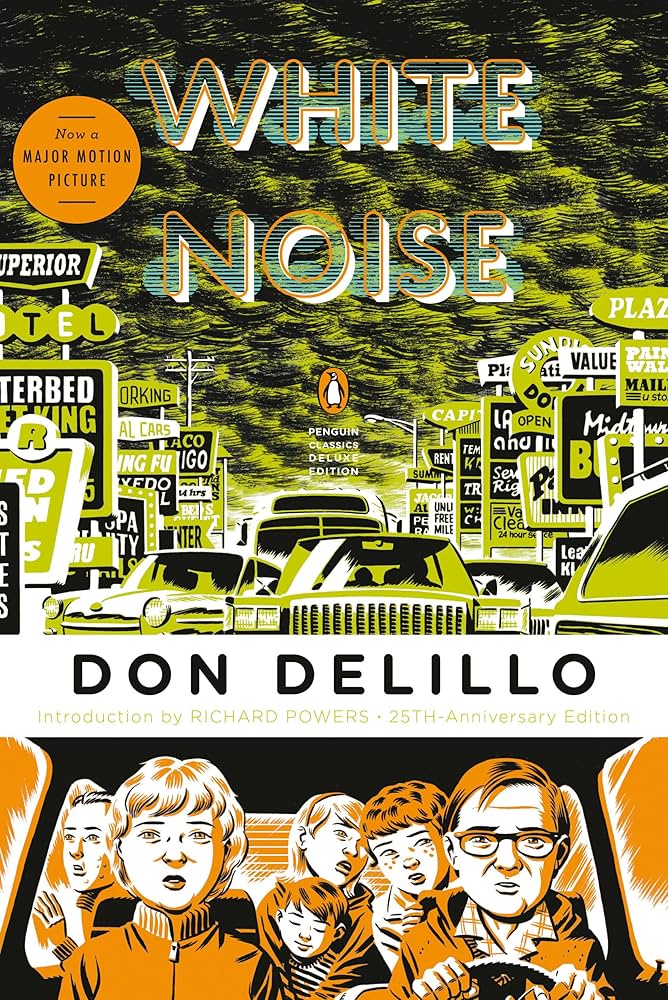
Vikram Murthi’s review (in The Nation) of Noah Baumbach’s 2022 movie adaptation of White Noise (which I haven’t seen, though the decision to cast Don Cheadle as Murray Siskind strikes me as probably a good one), references semiotics:
For me, DeLillo’s novel has always felt eerily contemporary despite being undoubtedly of its time. Though the linearity of broadcast television no longer dominates American culture, the bombardment of advertising and brand awareness remains at an all-time high thanks to the Internet. Semiotic analysis is now the default mode of consuming entertainment; the cultural-think-piece industry more or less reflects how Gladney and his academic colleagues speak to one another.
As I was writing this SEMIOPUNK series installment, the New York Times published a cultural think piece, by business features writer Emma Goldberg (who has a bachelor’s degree in political science from Yale University, we read in her bio, and a master’s in gender studies from the University of Cambridge), titled “Why Everything is ‘Coded’ Now.” One could easily imagine Goldberg explaining her semiotic-ish insights to Gladney.
PS: Writing in The Hollywood Reporter, David Rooney, who feels that Baumbach’s version of White Noise is overly faithful to DeLillo’s “careening clown car of ideas,” describes the adaptation as “equal parts clear signal and wearying static.”
So how does the semiotic analysis depicted — though not described using that term — in DeLillo’s White Noise hold up, as of 2022? Quite well, according to Murthi:
If the supermarket as America’s consumerist mecca sounds trite these days, the modern equivalent lives online via Amazon. Cable news still conditions our experiences and responses to external events, while social media also molds our sense of personal authenticity. One need only take a gander at a Twitter feed to immediately clock the concept of speech as noise — a bedrock of half-truths, bad-faith readings, and distorted evidence. The invisible, disquieting network of “psychic data” that courses through the novel has only expanded as technology has proliferated. (DeLillo would have had a field day with QR-code menus if they had been around back then.) White Noise’s citations might have aged, but DeLillo’s societal diagnoses remain firmly up-to-date.
Exactly like William Gibson’s novels, DeLillo’s near-future sf would quickly become dated… as its predictions, now matter how satirical or exaggerated, have come true.
“This is an America where no one is responsible or in control; all are receptors, receivers of stimuli, consumers,” fretted Jayne Anne Phillips’ contemporary review in the New York Times. Does anyone, today, still doubt that DeLillo was right?
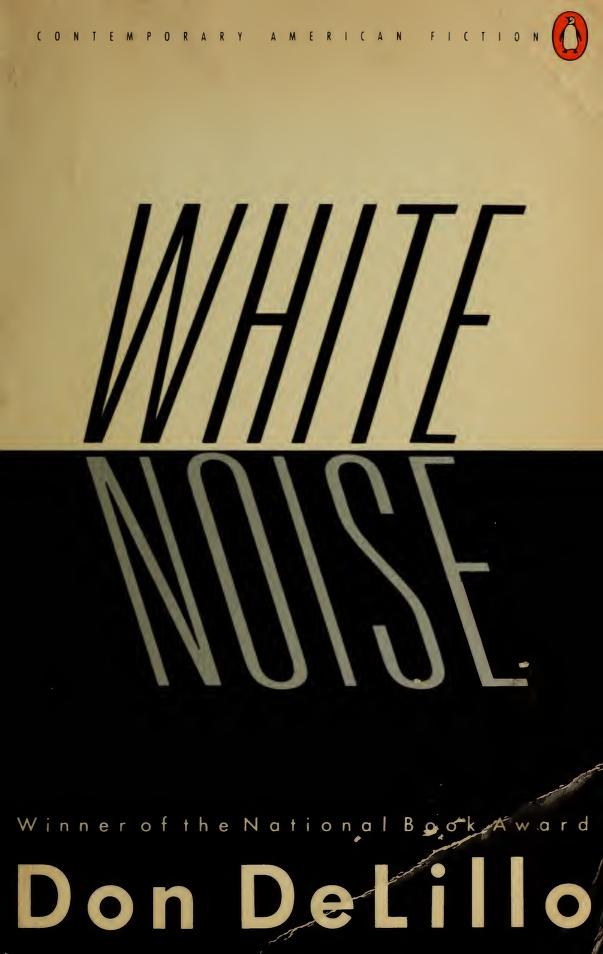
Murray is Donald Duck to Jack’s Mickey Mouse — a sidekick who steals the spotlight. DeLillo gives him many of the novel’s best lines. When the two men make a kind of pilgrimage to the most-photographed barn in the world, he slips into Baudrillard mode:
“What was the barn like before it was photographed?” he said. “What did it look like, how was it different from other barns, how was it similar to other barns? We can’t answer these questions because we’ve read the signs, seen the people snapping the pictures. We can’t get outside the aura. We’re part of the aura. We’re here, we’re now.”
Murray also predicts, and diagnoses the root cause of, our current “post-truth” moment:
The family is the cradle of the world’s misinformation. There must be something in family life that generates factual error. Overcloseness, the noise and heat of being. Perhaps something even deeper, like the need to survive. Murray says we are fragıle creatures surrounded by a world of hostile facts. Facts threaten our happiness and security. The deeper we delve into the nature of things, the looser our structure may seem to become. The family process works toward sealing off the world. Small errors grow heads, fictions proliferate. I tell Murray that ignorance and confusion can’t possibly be the driving forces behind family solidarity. What an idea, what a subversion. He asks me why the strongest family units exist in the least developed societies. Not to know is a weapon of survival, he says. Magic and superstition become entrenched as the powerful orthodoxy of the clan. The family is strongest where objective reality is most likely to be misinterpreted. What a heartless theory, I say. But Murray insists it’s true.
As Murray claims, late in the book, “I only want to elicit truths you already possess, truths you’ve always known at some basic level.” This too is true of commercial semioticians. Everyone engages in semiosis, we often tell our clients. But a semiotician does so deliberately, painstakingly, and self-reflectively. This sort of analysis takes time (which our clients rarely want to afford us), and it can result in an almost ecstatic state once everything begins to “click into place.” Here’s Murray again:
“I’ve been sitting in this room for more than two months, watching TV into the early hours, listening carefully, taking notes. A great and humbling experience, let me tell you. Close to mystical. […] I’ve come to understand that the medium is a primal force in the American home. Sealed-off, timeless, self-contained, self-referring. It’s like a myth being born right there in our living room, like something we know in a dreamlike and preconscious way.”
Most of all, I enjoy tagging along with Murray as he tours the supermarket:
“Everything is concealed in symbolism, hidden by veils of mystery and layers of cultural material. But it is psychic data, absolutely. The large doors slide open, they close unbidden. Energy waves, incident radiation. All the letters and numbers are here, all the colors of the spectrum, all the voices and sounds, all the code words and ceremonial phrases. It is just a question of deciphering, rearranging, peeling off the layers of unspeakability. Not that we would want to, not that any useful purpose would be served.”
A useful purpose is served, though, by such activity. Or so we tell our clients.
White Noise is puzzling in structure — fragmented, out of order. We’ll figure out that is because Jack, who neurotically fears that all courses of action centering around a plan inevitably lead to death, avoids planning. DeLillo’s story, which is aimless yet adds up to something (if the reader is willing to participate in making sense of it), will end up back at the supermarket — where the aisles have been rearranged, which causes chaos among the customers. This too is a semiotic parable, one about the deep structural schemata of meaning that guide and orient our lives, for better or worse.
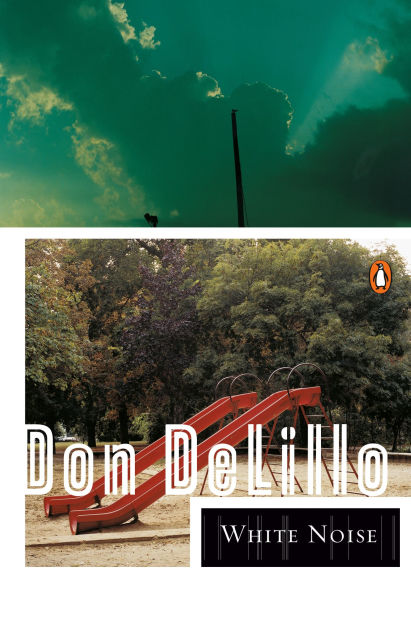
Though Murray remains my favorite character, in middle age — I’m seven years older, now, than Jack is in White Noise — I can relate, finally, to Jack. Who has problems sleeping. Who goes in for frequent medical checkups. Who worries about his children. Who becomes preoccupied with clearing all the unused clutter out of his home. Right!
But Jack also, in his less neurotic moments, becomes more like Murray — not any less credulous or skeptical, that is, but more capable of noticing and appreciating the innumerable small pleasures and beauties that daily life offers us. Even the “airborne toxic event” that may have fatally poisoned him has a silver lining of sorts. The sunsets in Blacksmith, Jack and his family will discover, have become spectacularly gorgeous.
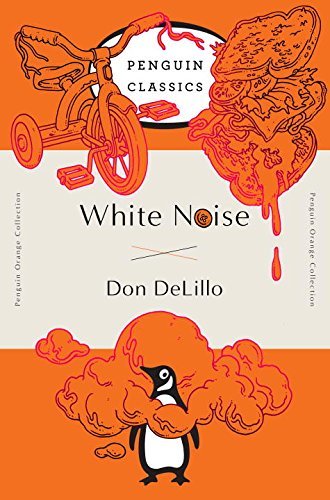
DeLillo’s eighth novel, the success of White Noise brought the author to the attention of a much larger audience. It won the National Book Award for Fiction.
JOSH GLENN’S *BEST ADVENTURES* LISTS: BEST 250 ADVENTURES OF THE 20TH CENTURY | 100 BEST OUGHTS ADVENTURES | 100 BEST RADIUM AGE (PROTO-)SCI-FI ADVENTURES | 100 BEST TEENS ADVENTURES | 100 BEST TWENTIES ADVENTURES | 100 BEST THIRTIES ADVENTURES | 75 BEST GOLDEN AGE SCI-FI ADVENTURES | 100 BEST FORTIES ADVENTURES | 100 BEST FIFTIES ADVENTURES | 100 BEST SIXTIES ADVENTURES | 75 BEST NEW WAVE SCI FI ADVENTURES | 100 BEST SEVENTIES ADVENTURES | 100 BEST EIGHTIES ADVENTURES | 75 BEST DIAMOND AGE SCI-FI ADVENTURES | 100 BEST NINETIES ADVENTURES | 75 BEST HADRON AGE SCI-FI ADVENTURES.
